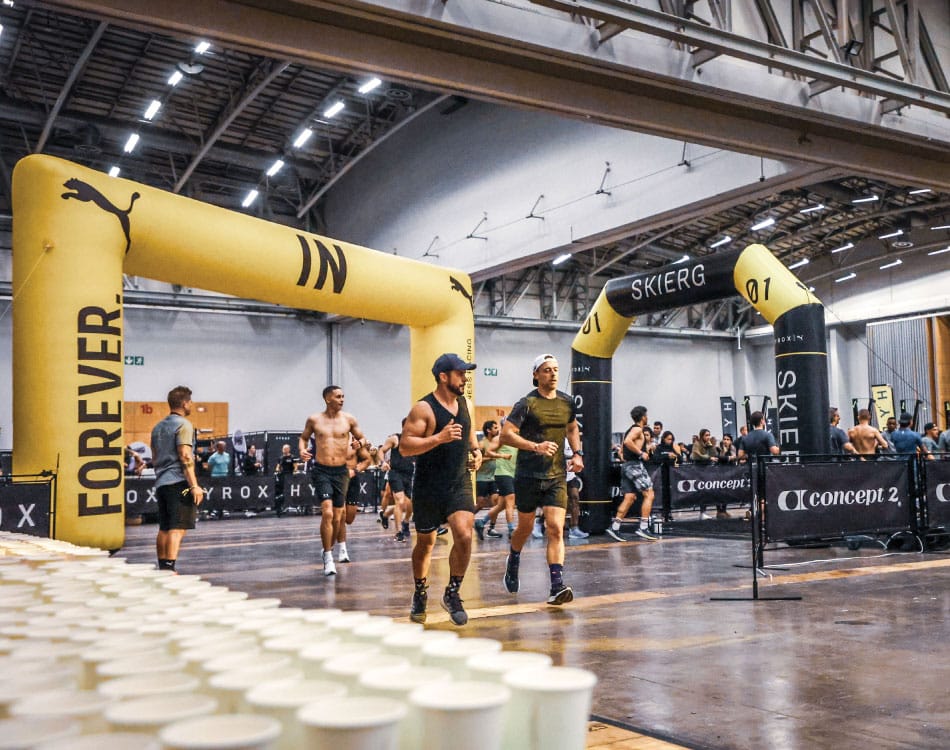Functional strength training has become a catchphrase in the fitness industry in recent years, and for good reason.
In its truest sense, the functional aspect aims to prepare the average person for the demands of everyday life. And in the high-performance world of sports conditioning, the term is often used in reference to training protocols that prepare an athlete for the specific demands of their sporting code.
READ MORE | These Potential Health Benefits Of Exercise Run More Than Skin Deep
An integrated system
Whatever functional fitness means to you, there is one central idea to the philosophy that, when followed, will ensure you achieve your functional training goals.
The concept leverages the understanding that the body functions as an integrated system, not as individual parts.
To this end, most truly functional training programmes aim to train movement patterns, not muscles. This methodology is grounded in solid exercise science as it adheres to the training principle of specificity.
Basically, to get stronger at a specific task, like getting up from a chair or squatting down to pick up your child, or a specific activity like running, you need to train the specific movement patterns involved.
READ MORE | Improve Foot Strength And Ankle Stability To Become A More Resilient Runner
Building a functional approach
The key to developing the most suitable functional training programme requires selecting exercises that target and enhance the body’s basic movement patterns.
The important factors in constructing a functional training plan include:
- Create a stable foundation that supports efficient movement.
- Understand the fundamental movement patterns you engage in most often.
- Strengthen those movement patterns with the appropriate exercises and correct set and rep structure.
This methodology not only strengthens all muscles that work together as an integrated system, it also enhances the neuromuscular system by developing better neuron firing, which ensures you engage the right muscles in the correct order for that specific movement pattern.
These adaptations have functional carryover into everyday life as they enhance motor control and coordination, which is particularly important for older people.
Moreover, functional movement-based training develops overall strength, which makes a person more resilient to fatigue.
READ MORE | This Is Why Endurance Athletes Should Always Include Strength Training
Create a solid foundation
The starting point for every functional training plan is create a solid foundation through core strength and stability and better range of motion and mobility around major joint structures like the hips, lower back and shoulders.
In this regard, your core muscles form the foundation for all movement patterns. But your core is more than just your six-pack ab muscles, yet most people spend disproportionate time and energy performing crunches and sit ups.
This focus on trunk flexion neglects core stabilisation, which is what you need for functional strength. Core muscles work constantly to stabilise your spine and pelvis, which is essential for good posture and control over movements like standing, walking and running.
From a movement efficiency standpoint, your core (which includes your glutes) is where you generate your power, and these muscles transmit force throughout the body from a stable foundation.
A strong core also distributes the stresses imposed on your musculoskeletal system during weight-bearing activities and protects your back under heavy loads.
Conversely, a weak core means that other muscles need to compensate by performing stabilising functions, even if that isn’t what they were designed to do. This creates weakness and inefficient movement patterns, which reduces strength and may result in injury.
READ MORE | Attack Every Dimension For A Total Core Workout
Cover all the movement bases
The key patterns are predominantly forward and backward movements, lateral (side-to-side) movement, rotation, pulling, pushing, squatting, lunging, and hinging. Other important areas of focus that can then follow should include enhanced proprioception and coordination.
The 6 key areas of functional strength
- Hip hinge: Squat, deadlift, good morning, kettlebell swing, snatch, clean
- Hip extension: Glute bridge, quadruped hip extension, donkey kick, kickback, step up
- Lunge: Bulgarian split squat, lunge, split squat, step-back lunge
- Push: Bench press, push-up, overhead press, one-arm press
- Pull: Pull-up, bent-over row, seated row, one-arm row
- Bracing: Plank, farmer’s carry, offset carry, side plank
In terms of set and rep structure, performing more than five reps per set (when using weights) typically shifts the focus away from strength development, with more emphasis on developing muscle size, which is not the main aim.
Ultimately, functional training entails working out in a manner that helps people move in the most efficient and effective ways possible for their specific requirements, whether that is pain-free and efficient movement in everyday life or enhanced sporting performance.















